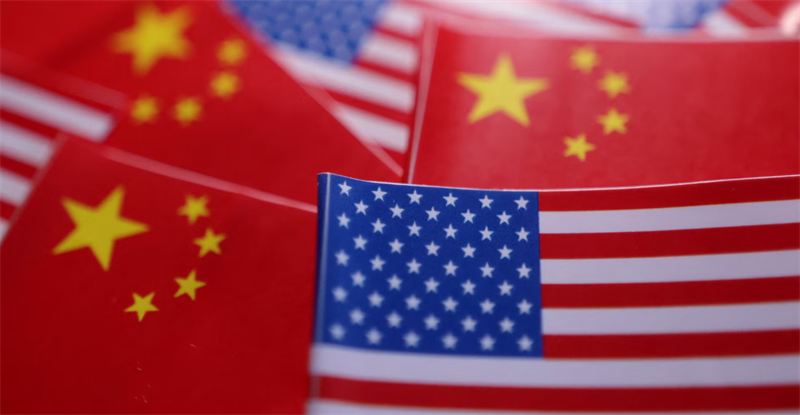On April 2, 2025, the Chinese government announced a sweeping new round of retaliatory tariffs against U.S. goods, in response to Washington's latest "reciprocal tariff" measures. The move, effective April 10, imposes an additional 34% duty on all U.S.-origin imports into mainland China. The Ministry of Commerce emphasized that the measures are in line with Chinese law and international norms, calling the U.S. actions unilateral and harmful to global trade rules.
In addition to tariffs, China imposed export restrictions on seven rare earth elements—samarium, gadolinium, terbium, dysprosium, lutetium, scandium, and yttrium—essential to high-tech sectors including electric vehicles, semiconductors, and defense. These steps add to a growing arsenal of trade tools Beijing is using in its intensifying economic standoff with Washington.
Semiconductor Industry Faces New Strain
The latest tariff round marks a sharp escalation in pressure on the global semiconductor industry. Mainland China remains heavily dependent on U.S. semiconductor technology and equipment, including EDA software and advanced lithography machines. In 2024 alone, the U.S. exported over $30 billion worth of chips and related technology to mainland China.
The new 34% import tax, layered on top of existing U.S. export restrictions and prior tariffs (such as the 50% levy announced in January), is expected to significantly raise costs for Chinese tech firms. A $100 million piece of equipment, for instance, would now incur an extra $34 million in duties—potentially forcing firms to delay upgrades or seek alternative suppliers.
For downstream industries like smartphones and electric vehicles, the impact could be severe. With already thin margins—some below 5%—manufacturers may face shrinking profits or be forced to raise prices. Companies reliant on U.S.-made chips, such as those from Qualcomm or Texas Instruments, may also experience supply chain disruptions.

Strategic Response: Tech Self-Reliance and Market Diversification
Despite the short-term pain, analysts say the trade conflict could accelerate long-term restructuring of mainland China's semiconductor sector. Government support, including the second phase of the "Big Fund" and tax incentives, continues to fuel investment in chip design, equipment, and materials. In 2024, domestic semiconductor funding topped 500 billion yuan (approx. $70 billion).
Domestic players have made progress in areas like power management and sensor chips, especially in mature process nodes. Meanwhile, companies are working to diversify supply chains away from U.S. technologies, seeking new partnerships in Southeast Asia and the Middle East.
Still, significant challenges remain. Mainland China lags 3–5 years behind in sub-7nm process nodes, and critical design tools like EDA software only cover a fraction of complex chip development needs. The broader ecosystem also lacks deep integration across design, manufacturing, and packaging.
Complicating matters further is the formation of the so-called "Chip 4 Alliance" between the U.S., Japan, South Korea, and Taiwan region, which could further limit access to advanced technologies.
Blacklists Expand: Sanctions on U.S. Firms
On April 4, 2025, China added 11 U.S. companies to its "Unreliable Entity List," a measure that bars them from conducting trade or investment activities in mainland China. The companies placed on the list include:
● Skydio Inc.
● BRINC Drones, Inc.
● Red Six Solutions
● SYNEXXUS, Inc.
● Firestorm Labs, Inc.
● Kratos Unmanned Aerial Systems, Inc.
● HavocAI
● Neros Technologies
● Domo Tactical Communications
● Rapid Flight LLC
● Insitu, Inc.
In addition, 16 U.S. entities were added to China's export control list, which prohibits the export of dual-use items to these firms. These 16 companies are:
● High Point Aerotechnologies
● Universal Logistics Holdings, Inc.
● Source Intelligence, Inc.
● Coalition For A Prosperous America
● Sierra Nevada Corporation
● Edge Autonomy Operations LLC
● Cyberlux Corporation
● Hudson Technologies Co.
● Saronic Technologies, Inc.
● Oceaneering International, Inc.
● Stick Rudder Enterprises LLC
● Cubic Corporation
● S3 AeroDefense
● TCOM, Limited Partnership
● TextOre
● ACT1 Federal
The new measures come amid rising tensions between the two countries, with both governments seeking to impose economic costs on each other’s high-tech sectors. While semiconductors and copper are temporarily exempt from the new tariffs, the long-term impact on the global supply chain could be substantial.
Outlook: Strategic Patience in a Prolonged Trade War
This escalating trade conflict signals a prolonged decoupling between the world's two largest economies, particularly in critical tech sectors. Experts suggest mainland China must focus on:
● Investing in core R&D for lithography, EDA, and semiconductor materials
● Building integrated industry ecosystems that connect design, fabrication, and testing
● Expanding into emerging markets through Belt and Road partnerships
While the path forward will be challenging, analysts argue that the current crisis could also serve as a turning point—accelerating the shift from tech dependency to self-reliance.
+86 191 9627 2716
+86 181 7379 0595
8:30 a.m. to 5:30 p.m., Monday to Friday
